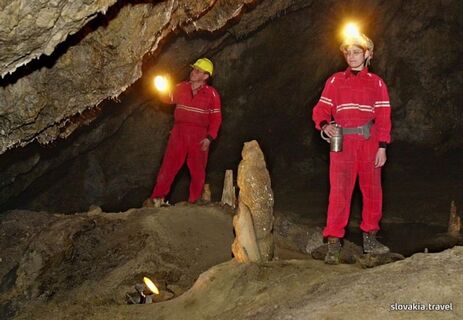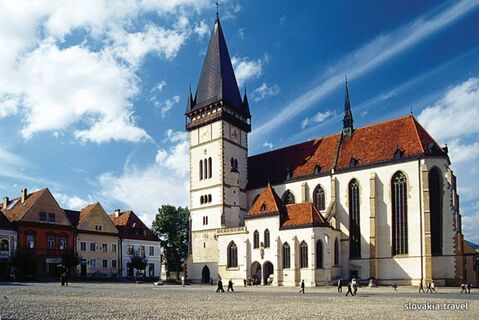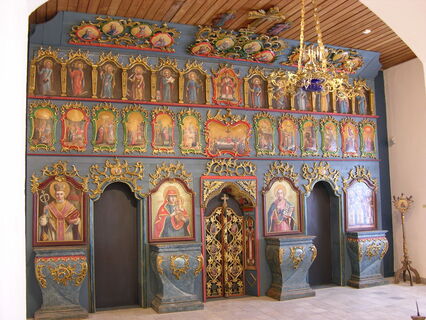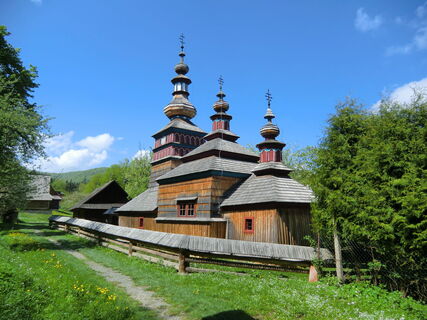Paintballhause Bardejov
Miesto, kde sa môžete vyblázniť a zažiť plno adrenalínu. Hrá sa vonku alebo v budove tvaru "h". Počas hry sa používajú aj dymovnice.
The Greek Catholic wooden church of St Lucas the Evangelist was built in 1826. It consists of three parts and stands on stone masonry. The iconostas of the 18th century also contains several older icons from the 17th century.







Obec Lenartov sa nachádza v blízkosti slovensko-poľskej hranice. Koncom 19. stor. cez ňu viedla obchodná cesta z Poľska do Galície. Ostali po nej spomienky v podobe studne (prameňa) a zrúcaniny hostinca Kráľova studňa. Dnes v obci pôsobí občianske združenie Kráľova studňa z Lenartova, ktoré sa zaslúžilo aj o výstavbu rozhľadne. Vybudovali ju nad Lenartovom v roku 2011.
Skalná ihla je viac známa pod názvom „Čertova skala“ – kamenný výtvor, ktorý je vysoký 12 m a spája sa s ním povesť spojená s výstavbou Ľubovnianskeho hradu. Nachádza sa v nive rieky Poprad asi 2,5 km od obce Chmeľnica. Od roku 1989 je tento prírodný výtvor vyhlásený za prírodnú pamiatku.
The only accessible cave in the north-east of Slovakia is the cave Zlá Diera (Bad Hole) near the village Lipovce. Speleological (cave) guides are available for demanding visitors. The basic route takes about 40 minutes. It is not demanding and suitable for children. Solid shoes and warm clothes are recommended (the temperature in the cave moves around 7 degrees of Celsius).
Set 800 m from the Square with Town Hall and Basilica of St. Giles in Bardejov, Penzión Magura features a bar and free WiFi throughout the guest house. Free private parking is available on site.
Located in Bardejov, Penzión M is 11.3 km from Church of St. Francis od Assisi in Hervartov. 35.4 km from Dukla Battlefield, the property is also 40.2 km away from Magura National Park. Free WiFi is provided.
Located only 700 m to the UNESCO-protected historical centre of Bardejov, the Hotel Artin offers en-suite accommodation, a winter garden, a lobby bar and a restaurant. Free private parking and free WiFi are available for guests on site.
Miesto, kde sa môžete vyblázniť a zažiť plno adrenalínu. Hrá sa vonku alebo v budove tvaru "h". Počas hry sa používajú aj dymovnice.
The Greek Catholic wooden church of St Cosmo and Damian from 1708 and 1709. It is the log structure consisting of three parts built on stone masonry. The architectural particularity of this church is the overhanging attic on pillars around the building. It is also the only church in Slovakia with a cellar. Baroque elements prevail in its interior. The majority of pieces in the iconostas are from the 18th century, but it also contains icons of the 16th and 17th centuries.
The Roman Catholic wooden Church of St Francis of Assisi (Kostol sv. Františka z Assisi) is in 2008, along with seven wooden churches of the Slovak part of Carpathian Mountain Area, it was included on the UNESCO Word Heritage List.
The most important monument on the principal square in Bardejov inscribed in the UNESCO World Cultural and Natural Heritage, is the parish church of St Egidius standing in its northern part.
Permanent expositions in Bardejov and in Bardejovské kúpele (Bardejov spas) belong under the Šariš Museum in Bardejov.
The Museum of Folk Architecture - Slovakia's oldest open-air museum - is located on the edge of the Bardejov Spa in north-eastern Slovakia. The museum's main sights include two wooden churches that were originally located in the village of Zboj (Orthodox) and the nearby village of Mikulášová (Greek-Catholic).
The Orthodox wooden church of St Nicolas was built in 1775. It consists of three parts and four spaces and is one the typical Lemko variant of the Ruthenian-Ukrainian three-part and three-tower churches. Its Rococo iconostas from 1766 is one of the best preserved in Slovakia. Some icons (St Nicolas, Crucifixion) are from the 17th century. This church was moved to the open air Museum of Folk Architecture in spa ofBardejov in 1967.
Not far away from Bardejov in north-east of Slovakia are the ruins of the Castle Zborov, also called Makovica.
The Greek Catholic wooden church of St Michael the Archangel is from the 18th century. It is a log structure consisting of three parts. Parts of iconostas are from different periods. The lavishly ornamented tsar door is the part that attracts attention. Some pictures of the iconostas are from the 19th century. The icon of Pokrova is from the end of the 18th century. The altar dates to 1716.
The Greek Catholic wooden church of St Lucas the Evangelist. The Greek Catholic wooden church of St Lucas the Evangelist from 1739. This log structure contains three spaces and it stands on the site of an older building from the turn of the 15th and 16th centuries. Iconostas is from the 17th century, some precious icons painted on wood are from the 17th and 18th centuries. The unique collection of old woodcarvings, parts of the church did not survive.





